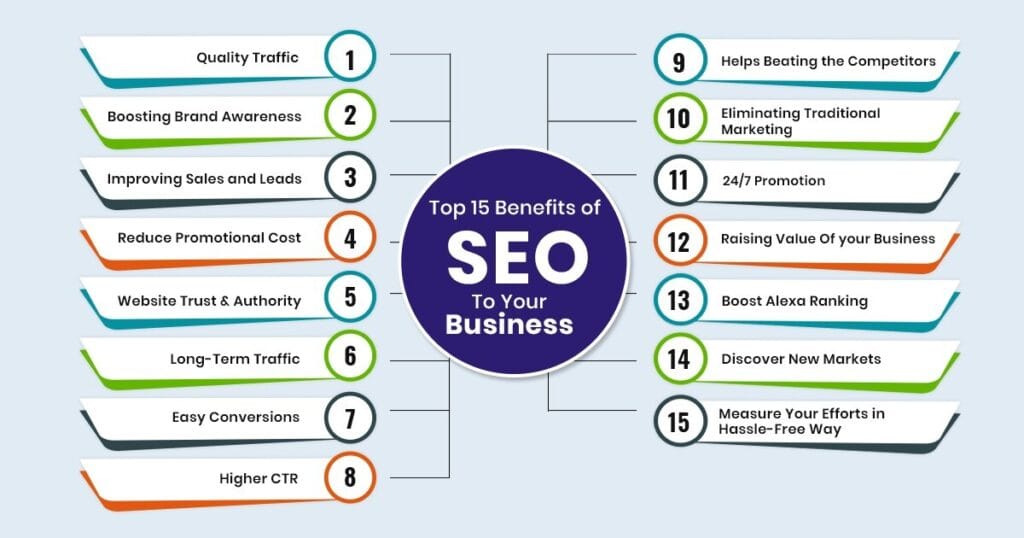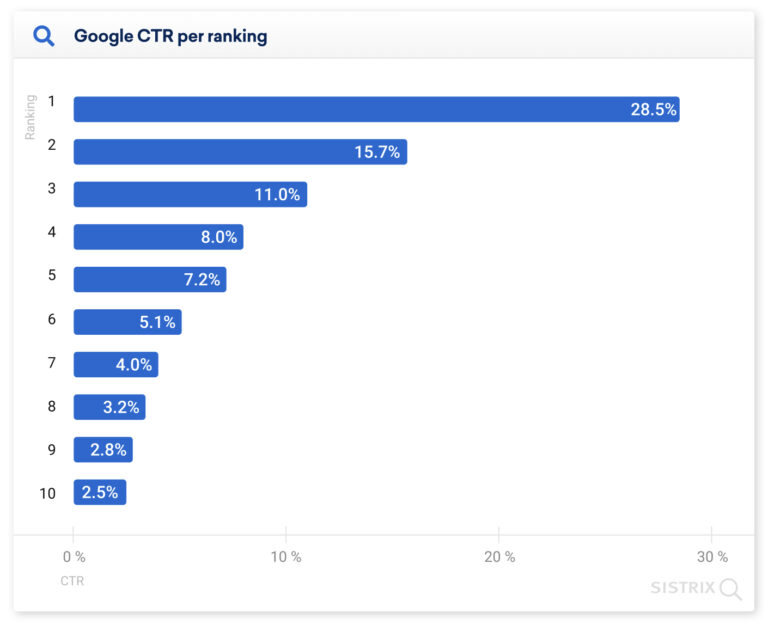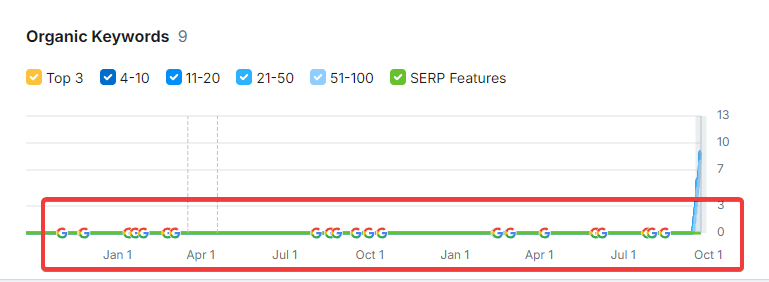SEO Acronym: What It Means & Why It’s Vital for Your Business
Everyone who learn and the power of SEO in the begging need to know what does SEO stand for, and in the modern world where everything is going digital, it is very important for any business to be online. The ability for businesses to be found by potential customers through search engines such as Google or Bing can be a make-or-break factor. This is where SEO, or Search Engine Optimization, comes into play. But what does this SEO Acronym mean, and why is it so important for your business?
Learning about SEO, its parts, and how it operates can assist you in tapping into a huge business opportunity that is available on the internet. In this article, we will explore the SEO Acronym and explain what it means, the acronyms and terms you should be aware of, and how to optimize your website for SEO.
What Does the SEO Acronym Stand For?
SEO Acronym means Search Engine Optimization, which is the practice of enhancing the visibility of a website on search engines such as Google, Bing, and Yahoo. In other words, SEO is the process of optimizing your website to make it more appealing to search engines so that they can rank your website higher on the SERPs when users search for terms related to your business.
The SEO is a large field and can be divided into several categories. It is not about keyword stuffing or writing meta descriptions for your content. Real SEO optimization considers factors such as usability, content, technical aspects, and off-site factors like backlinks and more.
The first thing that you need to know about SEO is what the acronym stands for and how the process works.
What does the acronym SEO stand for in business?
In a business context, SEO has an even more significant role to play. When implemented effectively, SEO enables your business to reach your target market at the right time when they are searching for your products. Whether you are an e-commerce store, a local physical store, or a big company, SEO can bring a lot of organic traffic from the search engine, which means more potential customers and more conversion rates.
Why Does Your Business Need SEO?
Having established that SEO Acronym means Search Engine Optimization, it is time to understand why your business needs it.
First, SEO is one of the most affordable marketing techniques that are available in the market today. In contrast to paid advertising where you keep on paying for each click or impression, SEO is more sustainable. Organic traffic is the best type of traffic that you can get for your site and with a well optimized site, you can get long term traffic.
Benefits of SEO for Your Business:

Increase Organic Visibility: SEO ensures that your website is among the first to be displayed when a user searches for specific keywords on Google. The higher the rank, the more exposure you get and the more likely the users will click on your site.

Drive Qualified Traffic: SEO enables you to select specific keywords that your potential customers are likely to use in their search. This means that the traffic that is directed to your website is targeted and has a high probability of making a purchase.
When you optimize your site for search engines, you are not only helping users find your site, but you are also enhancing the usability of your site. When your website is fast to load, mobile friendly and easy to navigate, both the search engines and the users will be more inclined to it.
Understanding Key SEO Concepts: On-Page vs. Off-Page SEO
To fully understand the SEO Acronym, it’s crucial to differentiate between the two major types of SEO: On-page SEO and Off-page SEO. They are both important in enhancing the ranking and visibility of your website but they work in different ways in the process.
On-Page SEO
On-page SEO is the process of optimizing all the factors that are within your control on your website.
These include:
Keywords: It is important to ensure that the keywords are well placed within your content. However, keyword stuffing should be avoided. However, it is better to use keywords naturally in the text so that they can be easily read and meet the user’s purpose.
Meta Tags: Meta tags are very important in SEO especially the title tags and meta descriptions. The title tag informs the search engines about the content of the page while the meta description gives a brief information to encourage people to click on the link.
URL Structure: Your URLs should be short, meaningful and should contain keywords if possible. This makes it easier for both the search engine and the user to comprehend the content of the page.
Content Optimization: As it is widely known, content is the king in SEO. This way, you will be developing a way of making sure that the users will spend more time on your site than on any other in the list of those displayed to them, and return frequently for more.
Off-Page SEO
Off-page SEO is the optimization of your website through activities that are carried out outside the website.
This includes:
Backlinks: Links from other reputable sites to your own are a signal to the search engines that your content is reputable.
Social Signals: Social media does not have an impact on ranking in any way but it is bad if you have no social media presence as this makes people visit and become acquainted with your site.
On-page and off-page SEO are two major parts of SEO and if one of them is not considered, it will impact the other.
Some of the most commonly used SEO acronyms and what they stand for
The SEO world is full of abbreviations, and it is important for both beginners and experienced SEO specialists to know at least the basics of them. Here’s a list of some of the most important SEO acronyms and their meanings.
SERP: Search Engine Results Page, the page that a search engine presents to the user after the user has entered a query.
NAP: Name, Address, Phone Number, the more important detail for local SEO, significant for companies with the point of sale.
CRO: Conversion Rate Optimization, the process of making changes to your website in order to increase the percentage of people who perform a specific action.
CTR: Click-Through Rate, a measure of the number of clicks on your website link in the search results in proportion to the number of times it is displayed (impressions).
GA4: Google Analytics 4, the newest version of the Google’s web analytics service that measures the traffic and activity on a website.
These acronyms should be familiar to anyone willing to keep track of the changes in the industry and choose the right directions for your SEO.
Search Engine Optimization Acronym in Content Marketing
The two of the discussed strategies can be interlinked, meaning content marketing and SEO are very much related. Consequently, content forms part of the most crucial aspects which search engines take into consideration while ranking web pages. The better and more relevant the content you offer, the higher your website will be ranked in the search engine.
When integrating SEO into your content marketing strategy, you need to focus on:
Keyword Research: Discover what your audience wants and create content around those keywords.
Quality Content: Google and other search engines like to see websites that provide their visitors with useful, relevant, and interesting information. It is important to respect the user’s search query and the content should be useful.
User Intent: When your audience types certain keywords in the search engine, it is important to know what they expect to find. Are they in the research mode, in the buying mode or in the mode of searching for a specific service?
For instance, if a person searches for ‘what is SEO and content marketing and what does acronym mean’, he or she does not want to be persuaded into reading anything but wants an explanation of what the two are.
If you are writing content in relation to the user intent and at the same time practicing SEO techniques, you will rank your results and at the same time people trust you. Describe how your SEO services can help companies to create an effective content marketing strategy.
How to Make Your Website More SEO Friendly
What one needs to know is that SEO of your website does not have to be complicated, but it has to be integrated. Below is a guide that will assist you in enhancing your site ranking:Here’s a step-by-step guide to help you improve your site’s ranking:
Include Keywords in Your Content: Start with the keyword research and then use the keywords in the content as organically as possible. Avoid keyword stuffing as this is a common method that will lead to penalties.
Improve Page Speed: It is also worth to mention that site speed is also a ranking factor. A site that takes a short time to load is more friendly to the users and therefore has low bounce rates.
Optimize Unique Content: Ensure that the content you are creating is fresh, engaging and relevant to the readers. This is because search engines frown upon websites that have duplicate content.
Take Care of On-Page SEO: This includes correct utilization of title tags, meta descriptions, headers, and internal linking structures. Make sure that every page has a clear and easily defined purpose.
By following these steps, you will be able to improve the SEO of your site and make it more visible in the search engine.
Technical SEO in the Process of Site Optimization
Technical SEO is the foundation of your website’s performance and is one of the components of the SEO Acronym. It means the way of putting the website in order so that the search engine would be able to crawl it in a proper way. Let’s break down some critical elements of technical SEO:
Crawling and Indexing: The given bots are utilized for perusing your site and incorporating the available pages into lists of the search motor. The main area of concern would always be to ensure that every relevant page has been indexed while there should not be any irrelevant page (such as the admin page) indexed.
Core Web Vitals: Google has brought Core Web Vitals as new ranking signals. These are Largest Contentful Paint (LCP), First Input Delay (FID), and Cumulative Layout Shift (CLS), all of which are related to user experience.
Mobile SEO: With such a number of people using their mobile devices to search for products and services, your site needs to be mobile friendly. Google’s mobile-first indexing means that your site’s mobile version is more important than ever.
Your SEO services should involve a technical SEO analysis to determine problems that may affect your site.
If you are looking for technical SEO experts, contact us.
Tracking and Measuring SEO Success
After you have developed a solid implementation plan for your SEO strategy it is always essential to evaluate the strategies through a set of KPIs. This enables you to know what is effective and what is not in your business.
Key SEO Metrics to Track:
Organic Traffic: This is the traffic that comes to your website through the search engine result pages or SERPs. Slow and steady growth of the organic traffic is an indication that your SEO efforts are paying off.
Click-Through Rate (CTR): CTR is the ratio of the number of clicks on your page from the search results to the number of times the page was displayed (impressions). A high CTR is an indication that your title tags and meta descriptions are interesting.
Bounce Rate: Bounce rate is the percentage of visitors who come to your site and then leave after visiting only one page. If the bounce rate is high then the site may not be providing the required information to the users.
These metrics can indeed be fine-tuned daily with the assistance of Google Analytics and Search Console to help enhance the SEO programme further.
How SEO and NAP are Related to Each Other for Local Businesses
SEO and NAP are two sides of the same coin for local businesses. Local SEO is important for companies that want to target customers within their region, and it is important to make sure that your NAP information is accurate.
Why NAP Consistency Matters:
Most search engines such as Google use NAP details to verify the credibility of your business. If your NAP information is not consistent across the various platforms, then your local search rankings will be affected.
NAP consistency enhances your website visibility on the Local Pack which is a box containing the local business results that appear above the regular listing of search results for location based queries.
For local businesses, your SEO services should be to monitor NAP information and to ensure that these are well updated and matched across the directories.
Common SEO Acronym Myths and Misconceptions
Therefore like any other industry, SEO also has its own myths and misconception which people usually tend to believe. Here are some of the most common SEO myths and the truth behind them:
Myth 1: SEO is dead. This is a common experience that is observed every time technologies are being invented. However, SEO is still a thing and is more important than ever.
Myth 2: The more keywords, the better the rankings. Keyword stuffing can even be detrimental to your rankings. But it is much wiser not to go for extreme keyword density and rather, create a content which fulfills user’s expectations.
Considering the truth about these myths in order to enhance your web site’s ranking with the search engines is crucial.
How to maintain relationship with SEO trends and algorithms.
Is your website as fast as it could be? 🤔 Make sure you aren’t making these common mistakes. Learn more in the latest episode of #SEOMadeEasy → https://t.co/vXFTJsAgLa pic.twitter.com/mH64I4q1KI
— Google Search Central (@googlesearchc) September 18, 2024
SEO is constantly changing. Google for instance changes its algorithm from time to time and this one has to be updated from time to time in order to maintain the ranking.
Key Ways to Stay Updated:
Follow Industry Leaders: New SEO information is released quite frequently, and I can find out more about what is going on in the SEO world, reading the SEO blogs and newsletters of SEO specialists, for instance, Moz, Search Engine Journal, and Neil Patel.
Regular Audits: It is essential to carry out the site audit frequently to see whether the site meets the existing SEO standards.
Use SEO Tools: Check the changes in site performance by using Google Analytics, SEMrush and Ahrefs to see which changes are to be made. (Ahrefs and SEMrush now display all Google updates in their reports, so be sure to keep that in mind.)

Any SEO strategy should be updated from time to times with new trends in the market so that an SEO strategy is effective. In case you do not have time or the link corporeality to perform this independently, then you should turn to SEO professionals, orREQ use the services of SEO to remain adequately competitive.
Conclusion
In this article, we explored what the SEO acronym means and why it is important for your business. From basic SEO principles to advanced technical SEO, NAP, and content marketing, this article covers all the essential aspects.
You may have discovered SEO-related terminologies you weren’t familiar with before, but it’s not necessary to know everything. A solid understanding of the basics and staying updated with current SEO trends is the foundation you need. By following a step-by-step approach, section by section, you will start to see improvements in your website traffic.
SEO is a long-term strategy, and when developed effectively, it yields results over time.
Improve Your Website with Professional SEO Solutions
If you are interested in taking your website to the next level of SEO, then our SEO services are for you. For example, if you need help with on-site optimization, or SEO maps, or constructing a content plan, do not hesitate to contact our consultants.
Call us today for your free SEO consultation and find out how we can assist your business in its online presence.